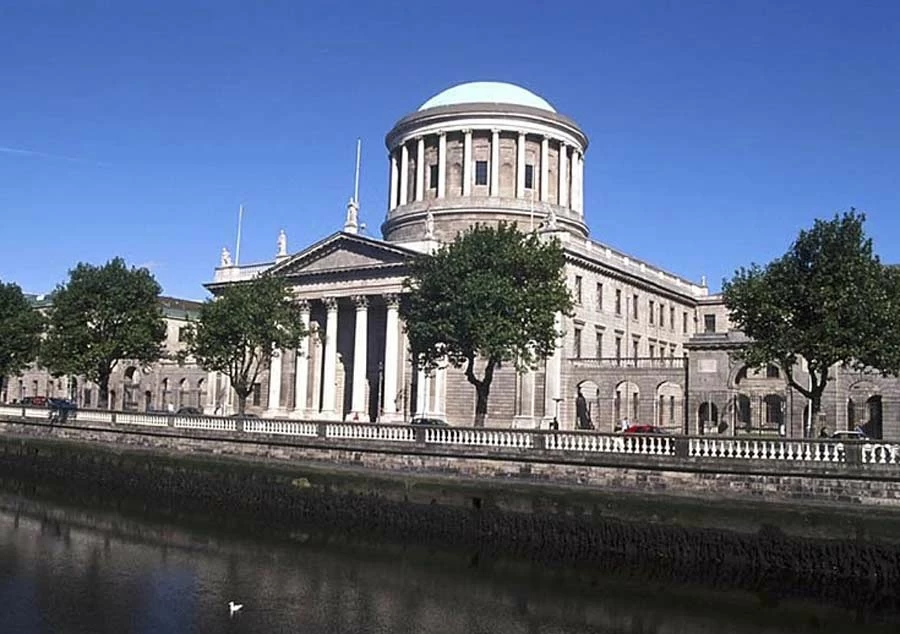Sophie Toscan du Plantier, a television producer from France, was murdered in a quiet region of Ireland on December 23rd, 1996. Her body was severely battered, suggesting a crime of passion rather than necessity. But even after investigating the case for years, there is still no definite answer as to who committed this violent crime, or why.
Sophie Toscan du Plantier’s husband and family mourned for the loss and sought answers particularly from an Englishman, Ian Bailey, who also lived in that area. Many have considered Bailey to be the prime suspect in the crime, but he has always denied his involvement in this death case.
The Irish police have always declined to prosecute Bailey, citing a lack of sufficient evidence, but the French authorities showed no such reticence. Frustrated by the Irish refusal to allow Bailey to be extradited to France, a French court nevertheless convicted him of the murder in absentia in 2019.
Bailey remains a free man living in the same rural Irish community to this day.
The Last Day of Sophie Toscan du Plantier
Sophie Toscan du Plantier looked to her farmhouse in south west Ireland as an escape from her busy life in France. She was a prominent socialite in Paris society, married to the famous film producer Daniel Toscan du Plantier.
It may well have been these pressures which led to her fleeing to her farmhouse in Ireland for a vacation, apparently choosing to spend that Christmas away from her family and friends. There she stayed, dropping into town occasionally for groceries but mainly choosing to remain on her own in the house overlooking the sea.

But at 10am, on December 23rd 1996, a neighbor spotted a woman’s body lying by the road outside the farmhouse. Someone had met with Sophie during the night and killed her. It was evident that the attack had been brutal just by seeing the bruises.
The local community was shocked: there hadn’t been a reported murder in that area for decades. Perhaps this is why, at this crucial early stage so soon after the crime, mistakes were made in the investigation.
There was a 24-hour delay before the pathologist arrived on the scene, during which time Sophie’s body was left lying where she was found, wearing only leggings and a t-shirt. Owing to the delay, much forensic evidence was lost and it was now impossible to pinpoint the exact time of death.
The Autopsy Report
The autopsy report revealed that Sophie had over 50 injuries on her body. Sophie’s face and head had been battered and smashed with a rock and concrete block. Her fingers were broken, apparently as she tried to defend herself from the attack.
Her clothes were torn, and there were scratches over her body which appeared to have come from nearby briars and barbed wire which she had tried to escape through. This seemed to be confirmed when blood was found on the brambles, as well as a nearby gate.
There were no such signs of sexual assault. But there was one blood sample found on the body where the DNA did not match that of Sophie. The main problem in the minds of the local police however was that there were no suspects. Sophie had kept mainly to herself, and murder was almost unheard of in the quiet community.
Because of this, as well as the manner of the crime, the case drew a lot of media attention. The public and the French authorities put a lot of pressure on the Irish police to quickly solve the murder and arrest the guilty party.
The Police Investigation
The police started by attempting to track the movements of Sophie Toscan du Plantier over her last days. CCTV footage showed she landed at Cork Airport on December 20th, 1996. Police talked to several witnesses and appealed to the public for anyone with information to come forward. This led to many anonymous tips being received over the phone, most of which were discounted.
Prominent among the journalists covering the crime was an Englishman who lived just across the valley from Sophie, and could see her house from where he was living. His name was Ian Bailey. Having worked in England as a journalist in previous decades, he had relocated to Cork in 1991. He had decided to leave journalism and focus on gardening and poetry.
Police knew that most murder victims knew their attacker, and initially focused on Sophie Toscan du Plantier’s husband. But once flight records proved he could not have been in Ireland, he was dropped from the list of suspects.
Police then turned to the physical evidence, starting to look for people with injuries and scratches over their bodies consistent with barbed wire and briars, or received from Sophie as she tried to defend herself. Police noticed scratch and cut marks over Bailey’s hands.
Suspicions Mount
When the police challenged Bailey about these injuries, he said that he got these scratches and cuts while preparing turkey for Christmas. Further, he claimed the scratches also came from climbing a fir tree on his property to cut the top off, for a Christmas tree.
Was this too much of a coincidence? A forester noted that the type of tree Bailey claims to have climbed is not likely to produce the type of wounds he had on his arms. Unsatisfied with the answers Bailey had given, the police turned to the articles he had written on the murder.

The police were shocked to see the immense amount of details contained in the articles, suggesting Bailey was familiar with both Sophie and the crime scene. The articles were also released very quickly after the murder, which meant Bailey had either done a huge amount of research in a very short time, or was an extremely lucky guesser.
Or it meant that Bailey was the murderer. Everything seemed to point to him, and he was duly arrested on February 10th, 1997. However, he was released later without being charged. In January 1998, he was arrested once more but was released yet again!
Bailey offered a strand of his hair as a sample to prove his DNA did not match the foreign blood found on Sophie’s body, and said he had no involvement with this murder case. But strangely he seemed to relish the attention. Several people in the community came forward to say that Bailey had confessed to the murder, which Bailey dismissed as either dark humor or drunken ramblings.
One witness even placed Bailey near Sophie’s house on the night of the murder, saying that he appeared to be in an agitated state. Bailey also had a history of domestic violence with his partner, Jules Thomas, an artist. Thomas did not back up Bailey’s account that he was asleep with her the night Sophie was killed, stating instead that he was gone for much of the night
Bailey’s Conviction
But all this evidence was circumstantial, and nothing tied Ian Bailey directly to the murder. Because of the initial 24 hour delay there was no forensic evidence which could have proved his involvement. In 2001, the Director of Public Prosecutions, Ireland said that this lack of evidence meant that the police would no longer be investigating Bailey for Sophie Toscan du Plantier’s murder.
Furthermore, the eyewitness who said they had Bailey at the crime scene on the night of the murder took back their statement in 2005, saying it had been coerced by the police. Could it have been that the police, frustrated by a clear solution to the case and under pressure to resolve things, had tried to pin the murder on a local eccentric, despite a less than perfect fit?

A French magistrate, frustrated with the lack of progress, issued a warrant for the arrest of Bailey in 2010. However, the Irish Supreme Court then ruled against his extradition in 2012 and again in 2017.
Despite their inability to have Bailey appear in person in a French court, in 2019, Bailey was tried in France in absentia. Bailey was duly found guilty and given a 25-year sentence by the three judges at Cour d’Assises. Bailey said to the Guardian newspaper after the verdict, “All they’ve done is convict an innocent man, who had nothing to do with the crime.”
No End To The Mystery
So, does the death of Sophie Toscan du Plantier remain unsolved? The blood sample that was found over the body of Sophie is still unidentified. The gate with the bloodstain was taken from the crime scene and then somehow lost by the Irish police. Bailey’s story seems unbelievable, but nobody can prove it isn’t true.
Maybe one day the case will be definitively solved. But, 25 years after the murder, the chances seem slim indeed.
By Bipin Dimri
Top Image: Sophie’s murder remains officially solved in France, and unsolved in Ireland. Source: Dave / Adobe Stock.